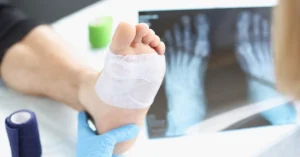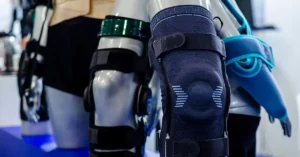The respiratory industry is highly regulated, and rightfully so. Any industry that holds people’s health and safety in their metaphorical hands has no room for error in compliance.
Unfortunately, there are organizations that deliberately disobey equipment usage and compliance standards in order to cut corners and increase profits.
To help people better identify where organizations are not in compliance or are breaking usage standards, we have outlined some of the common regulations and how individuals can help hold companies breaking these regulations accountable.
Non-Invasive Ventilation Therapy Device Compliance
The best way to show compliance or non-compliance with these devices are by the hours used. The hours of use are usually captured when a respiratory therapist visits the patient at their home to conduct a “vent check”. Some non-invasive ventilators are so sophisticated that the hours of use by the patient are recorded and wirelessly transmitted to the DME provider. So it should be crystal clear to the DME provider whether or not this very expensive piece of rental equipment is being used by the patient and should be billed to the insurance company. There could be a significant liability for any DME company that routinely and knowingly bills for equipment not being used by the patient.
Sleep therapy device (CPAP and BiPAP) compliance
For various sleep issues, patients will be prescribed a CPAP or BiPAP to provide relief. There are a number of usage standards and compliance regulations that have to be followed to get insurance companies to continue paying for the devices. While there are a few differences for specific insurance companies, Medicare and most insurance companies require the following:
- A set minimum usage throughout the first 90 days
- Use of the device at least four hours a night for 70% of nights
- A follow-up appointment with a doctor between the 31st and 90th day of treatment
Additionally, there are several instances of documentation that are necessary for insurance payment as well. They include:
- A baseline sleep study that documents a condition necessitating a sleep device
- Patient statistics such as BMI, airway system evaluation, and more
- A write-up that proves the symptoms have improved with CPAP or BiPAP treatment
A type of fraud exists where companies forge the necessary documentation in order to recuperate insurance payments without legitimate cause. If you suspect this is happening in your organization, pay careful attention to the documentation and supporting documents submitted to the insurance companies. If they don’t line up with the treatments and evaluations that are actually taking place, it is a cause for concern.
How to report companies who are not in compliance with equipment usage regulations
If your organization is not complying with equipment usage regulations, you have the ability to set it right. You can expose fraud safely and securely with the right team of experts by your side. If you are unsure of where to start, the team at the Daniel J Ocasio Whistleblower Law Group will support you every step of the way.
Being a whistleblower in the respiratory industry is a noble act. You’ll help ensure organizations are doing the right thing and keeping innocent people safe for long after your report.


